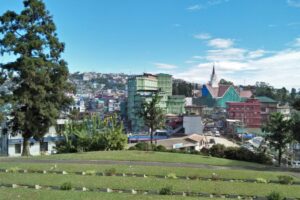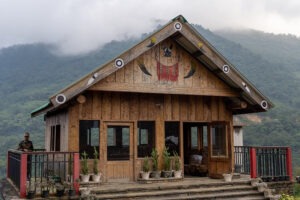Longwa is located in the Mon district of Nagaland in the far corner of Northeast India the Naga Self-Administered Zone of the Sagaing Region of Myanmar. It is a unique village nestled in the heart of nature, where unique geography and cultural richness come together to create an unforgettable travel experience. Beyond its picturesque setting, Longwa boasts a unique geography that sets it apart from other villages.
The village is inhabited by the Konyak Naga tribe, known for its unique customs, practices, and beliefs. Despite being situated in a remote location, Longwa boasts a rich and lively cultural heritage. A fascinating yet somewhat scary thing about the village and its people is that the tattooed Konyak tribe used to practice headhunting here until the 1960s when it was banned by the authorities.
The village celebrates this heritage through various festivals and events held throughout the year. Whether you seek a tranquil retreat, a chance to delve into a captivating culture, or an opportunity to immerse yourself in the natural beauty of the outdoors, Longwa Village promises an unforgettable experience.
Geography of Longwa
Longwa is about 50 kilometers away from the closest town, Mon. The village is surrounded by lush forests and rolling hills, offering breathtaking views of the landscape. Despite its remote location, Longwa is easily accessible from major cities in Nagaland and is a popular destination for both domestic and international tourists.
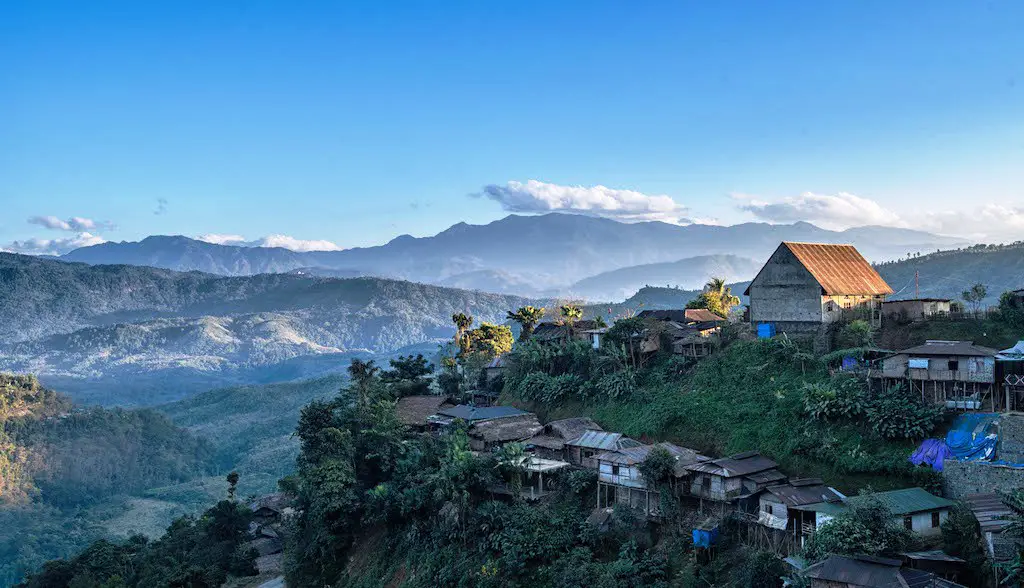
Longwa’s geography is extraordinary due to its location straddling the international border between Nagaland in the Mon district of India and Myanmar. The village is divided by the boundary line, with one half falling within the Indian territory of Nagaland and the other half extending into Myanmar. This unique division lends Longwa a cross-border charm, allowing visitors to experience the essence of two countries within the confines of a single village.
Brief History of Longwa Village
Longwa Village has a history connected to tribal communities that lived here for a long time. The village was established many years ago by Konyak tribesmen who came from Myanmar. These tribes created a rich culture, combining their traditions with things from the outside.
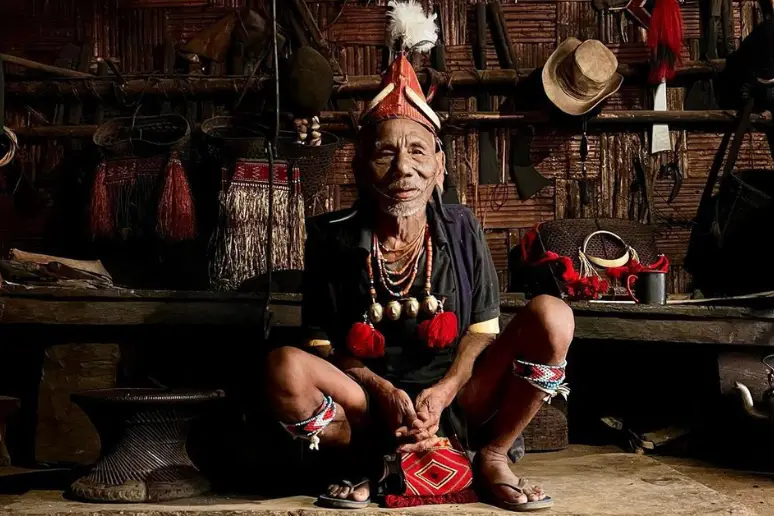
In the past, Longwa was important because it was close to the border with Myanmar. There were often conflicts between different tribes over this area. Even with these problems, the people in Longwa stayed close-knit and kept their rich culture alive.
Today, Longwa Village is a lively community known for its special culture and beautiful natural surroundings. Even though modern changes and the challenges of the world today, the people of the village still celebrate their culture and hold onto the traditions passed down over the years.
Unique Dual Citizenship
As per local tradition, Longwa Village established its dual citizenship many centuries ago to ensure peace and security in the area. This arrangement allows villagers to live peacefully without interference from either country, preserving their unique cultural heritage and traditions.
This dual citizenship is recognized by both India and Myanmar, enabling villagers to freely travel, trade, and participate in events on both sides of the border. Longwa’s dual citizenship is a rare example of cultural and political cooperation between two nations, showcasing the resilience and adaptability of the local people. It emphasizes the importance of cultural diversity and respecting the heritage of different communities.

Longwa Village’s dual citizenship is a unique aspect of Nagaland’s cultural heritage, highlighting the rich history of the region. It serves as a reminder of the significance of cultural diversity, political cooperation, and the importance of preserving the heritage of traditional communities.
Major Attractions in and Around Longwa
Longwa Village is a place where visitors can enjoy a variety of attractions that showcase the culture and nature of the region. Visitors can learn about the history and traditions of the Konyak Naga tribe, who are the last of the tattooed headhunters. They can witness their festivals, performances, and art, and also visit their homes and villages to interact with them. The village is located in a scenic area, with green forests, hills, and rivers. Visitors can explore the natural beauty of the area by walking, trekking, or relaxing in the rural setting.
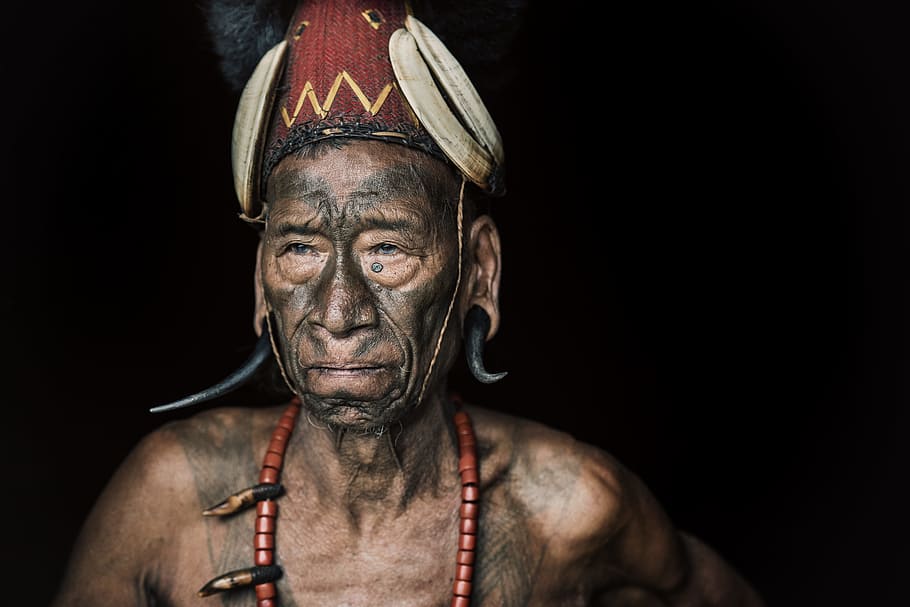
Longwa is famous for its artistic creations, such as fabrics woven by hand and wood objects sculpted with skill. Visitors can explore the local workshops and stores to discover these crafts and to buy exquisite and original handmade products.
The Angh’s House
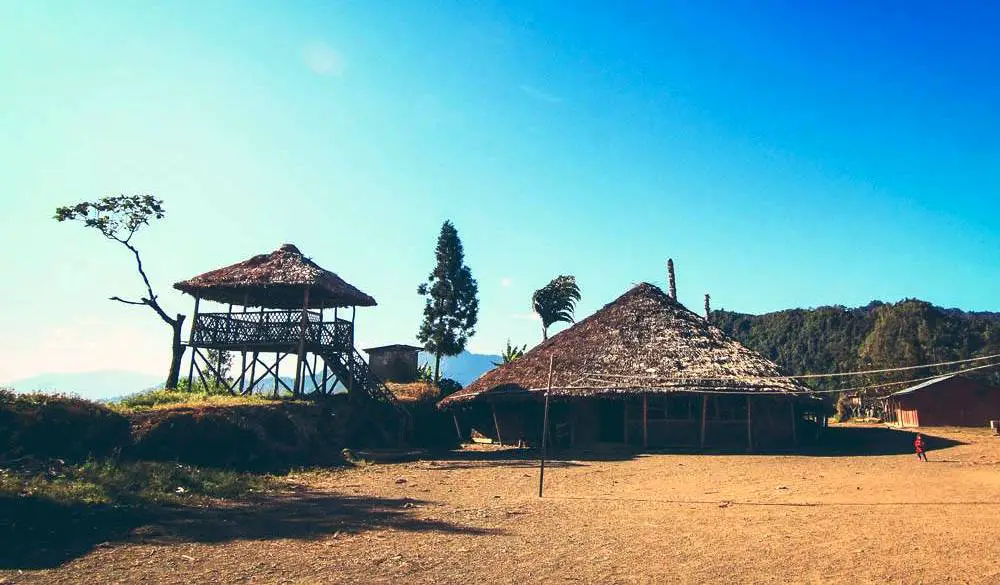
At the heart of the village lies the Angh’s house, a major attraction adorned with intricate wood carvings, buffalo horns, and captivating photographs. Every corner showcases wooden sculptures, traditional weapons, and a remarkable long drum from wartime. The house is a testament to the unique wood carving skills of the region, with various objects crafted from a single piece of wood. A special highlight is the traditional kitchen, straddling the India-Myanmar border, where guests are treated to black tea and snacks. The talented women in the house create exquisite jewelry and crafts, available for purchase along with traditional items at a roadside market in front of the Chef’s house.

Konyak Naga: The Last Tattooed Headhunters of Longwa
Longwa is a village where the Konyak Naga tribe lives. They are among the last of the Konyak Naga tribe, who used to hunt and collect the heads of their enemies. Their tattoos show their clan, village, and achievements. They use natural ink from plants to make tattoos on their body parts. Visitors can see their homes and culture with a local guide. However, tattooing was outlawed in India in 1960.. The Konyak Naga tribe has a rich and fascinating history, which is reflected in their customs, rituals, and art. They have a unique social structure, where the head of the village is called the Angh, and he has authority over several villages.
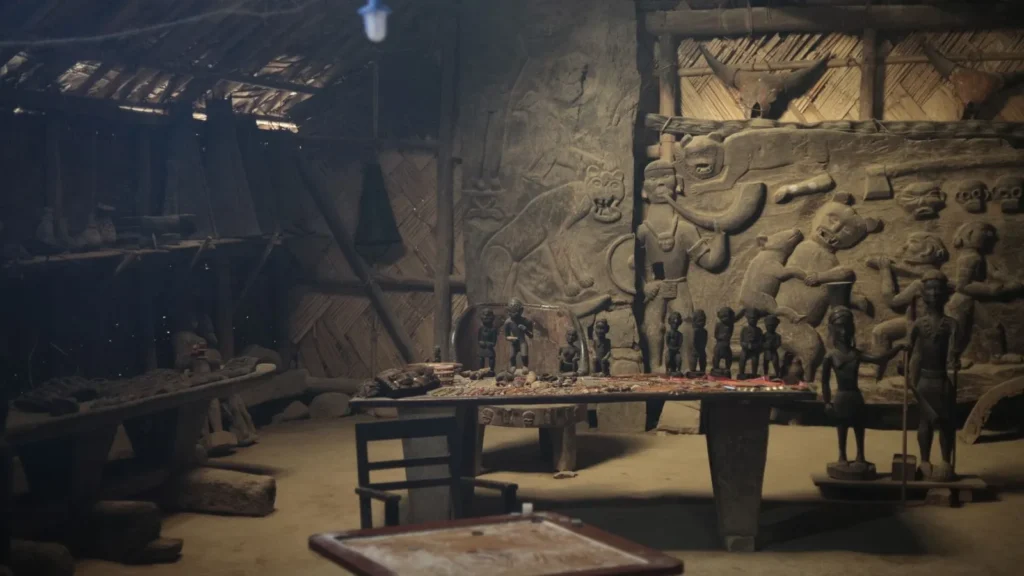
How to Reach Longwa
By Air
The closest airport to Longwa is Jorhat Airport in Assam, which is at a distance of 191km. You can take a cab or a local sightseeing bus from the airport to get to Longwa village. This place is well-connected by flights from all the major domestic airlines in the country.
By Road
There are two options for traveling to Longwa: driving your car or taking a tourist bus, either public or private. Buses from Dimapur, Kohima, Sonari, and Simulguri go to Mon District regularly. A road trip will also let you see the scenic views along the way to this fascinating village.
By Train
The closest railway station is Bhojo railway station, which is at a distance of 88km. You can reach Longwa village by taking super-fast express trains that come from different parts of the country. This makes the village affordable to visit for everyone.
Indian travelers need to obtain an Inner Line Permit (ILP) before entering the state.
(Details on how to obtain an ILP are discussed in one of our earlier articles)



